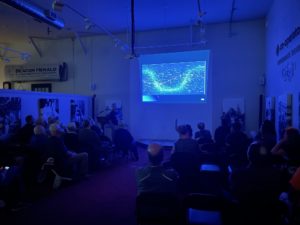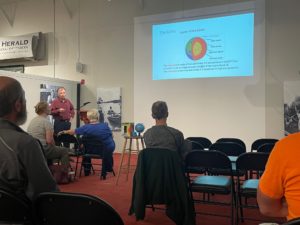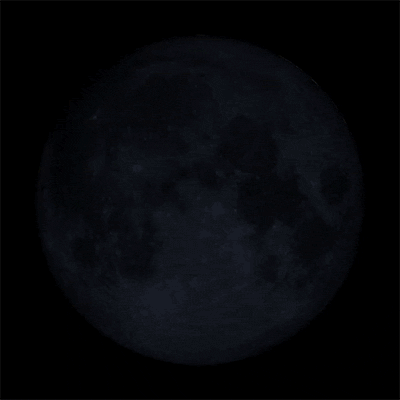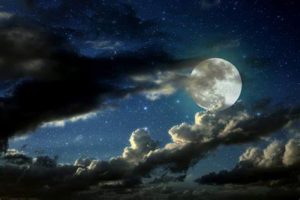
We had our hopes up for star constellation viewing Friday night at the Stratford Museum with the Stratford Astronomy Group (SAG) and their telescopes.
The Darkest Dark by Chris Hadfield is the latest Tales & Trails story to be featured on the Heritage Trails at the Stratford Museum.

Before the party began, SAG had on display outdoors its recently acquired ZWO Seestar S50 telescope. A small but powerful telescope, we will be sure to bring it out again at future star parties. Using it, deep sky objects can be viewed and displayed on linked phones and Ipad tablets.
Even with cloudy conditions, the party attracted an audience of 30 plus listeners happy to be enthralled by three SAG presenters of the night sky.
Dr. Michael Burns began the talks with a discussion on Constellations that make up the night sky. Engaging the audience with “story” is how Dr. Burns views the constellations. Throughout history, names and mythical stories have been attributed to the star patterns.
The stars are grouped in patterns referred to as constellations. To the ancient Greeks and Romans, the stories depicted in their constellations are of heroes and beasts who received a place among the stars as tribute for their deeds on Earth. They tell stories of the Herdsman tending his flock, stories of the Hunt, and stories of rescue and amazement. The International Astronomical Union lists 88 constellations—48 of which were recorded by Greek astronomer Claudius Ptolemy during the 2nd century.
European astronomers in the 17th and 18th centuries also contributed to the names used today for the constellations.
Dr. Burns encouraged his audience to create their own stories when viewing the constellations. He also mentioned that a “once in a lifetime” event would occur soon to see a star go NOVA. For more details, click HERE.
Next up to the podium was Doug Fyfe. Trained in astronomy, Fyfe’s subject was Astronomy 101. Full of facts related to the solar system, planets, comets and asteroids, Fyfe engaged his audience as he talked about the sun and the planets and galaxies seen through observational astronomy. He talked about light and the electromagnetic spectrum from low to high frequency.

The last talk was delivered by Patrick Hayes. A retired chemist, his story was on the interactions between the Earth and the Sun.
The Stratford Museum’s Megan Patterson was happy with the evening and on behalf of the museum gave a donation of $240 to SAG. See the thank you letter here.
Tom Kimber – News






